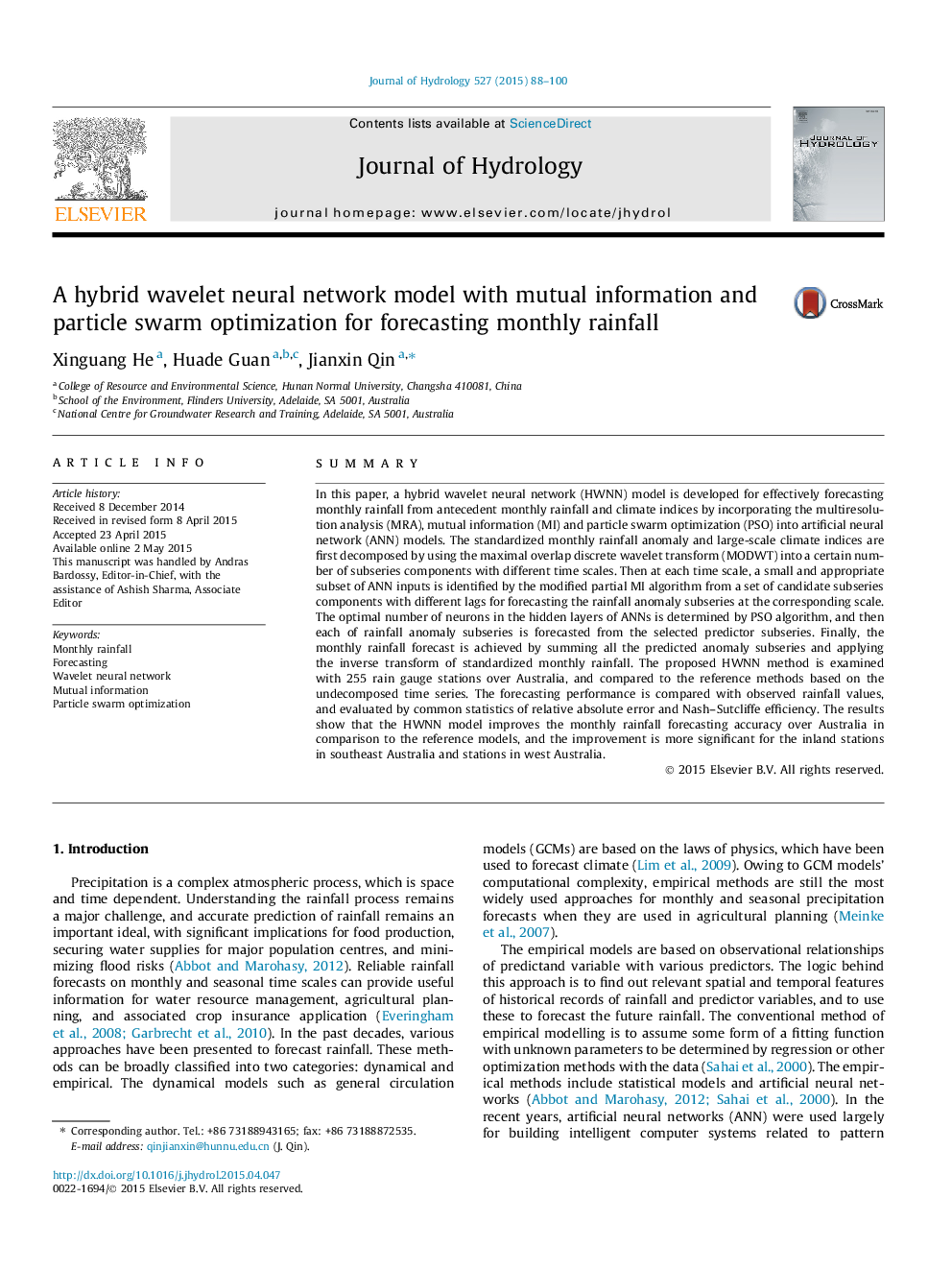| Article ID | Journal | Published Year | Pages | File Type |
|---|---|---|---|---|
| 6411040 | Journal of Hydrology | 2015 | 13 Pages |
â¢We present a hybrid wavelet neural network model for forecasting monthly rainfall.â¢Multi-resolution, mutual information and particle swarm are incorporated into ANNs.â¢Model structure is optimized by selecting inputs and the number of hidden nodes.â¢The forecasting performance is examined with 255 rain stations over Australia.â¢The hybrid model improves the forecasting accuracy compared to reference models.
SummaryIn this paper, a hybrid wavelet neural network (HWNN) model is developed for effectively forecasting monthly rainfall from antecedent monthly rainfall and climate indices by incorporating the multiresolution analysis (MRA), mutual information (MI) and particle swarm optimization (PSO) into artificial neural network (ANN) models. The standardized monthly rainfall anomaly and large-scale climate indices are first decomposed by using the maximal overlap discrete wavelet transform (MODWT) into a certain number of subseries components with different time scales. Then at each time scale, a small and appropriate subset of ANN inputs is identified by the modified partial MI algorithm from a set of candidate subseries components with different lags for forecasting the rainfall anomaly subseries at the corresponding scale. The optimal number of neurons in the hidden layers of ANNs is determined by PSO algorithm, and then each of rainfall anomaly subseries is forecasted from the selected predictor subseries. Finally, the monthly rainfall forecast is achieved by summing all the predicted anomaly subseries and applying the inverse transform of standardized monthly rainfall. The proposed HWNN method is examined with 255 rain gauge stations over Australia, and compared to the reference methods based on the undecomposed time series. The forecasting performance is compared with observed rainfall values, and evaluated by common statistics of relative absolute error and Nash-Sutcliffe efficiency. The results show that the HWNN model improves the monthly rainfall forecasting accuracy over Australia in comparison to the reference models, and the improvement is more significant for the inland stations in southeast Australia and stations in west Australia.
